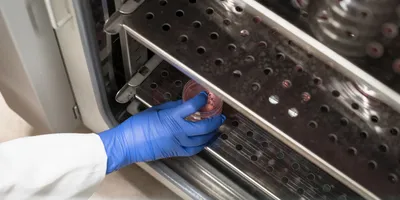Gas generators deliver particular gases to specific instruments in the laboratory. Systems are available for many different gases including hydrogen and nitrogen. Though the up-front costs of gas generators can be high, replacing your gas cylinders with a gas generator can lead to increased convenience and decreases in overall costs. Gas generators are also safer as they limit the amount of flammable and compressed gas in your lab. For a list of gas generator manufacturers, see our online directory: LabManager.com/gasgenerator-manufacturers
6 Questions to Ask When Buying a Gas Generator or Specialty Gases:
- What type of gas do you require for your application?
- Will you require more than one type of gas?
- What gas purity do you require?
- Which analytical instrument will the generator be paired with and is it compatible?
- How much space will the gas generator take up in your lab?
- What validation testing does the manufacturer perform before delivery?
Other Applications
In addition to being used with analytical equipment, a gas generator may be used for other applications. For example, in a lab that deals with biohazardous substances, gas—such as chlorine dioxide or ethylene oxide—or vapor—such as vaporized hydrogen peroxide—can be used for disinfection and sterilization. LabManager.com/PRG-2022-gas-generators
Green Considerations
Apart from reducing a lab’s carbon footprint by eliminating frequent deliveries of gas cylinders and reducing waste by only supplying the amount of gas a lab needs, today’s gas generators have a number of features that help reduce their environmental impact. These features include technology that helps make modern gas generators more efficient, reducing both monetary and environmental costs.










